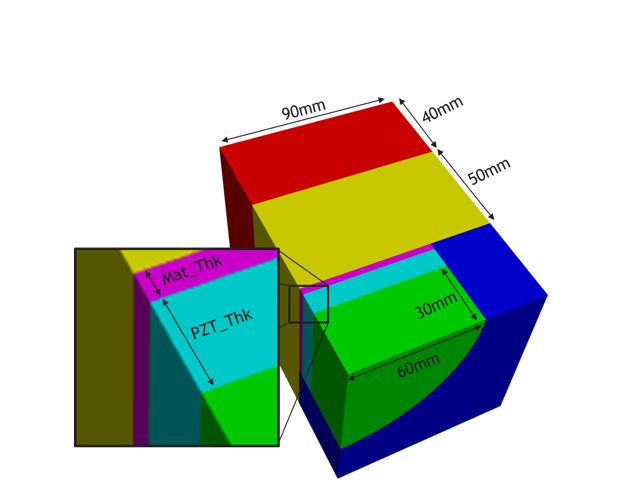Time-domain Simulation of Electromechanical Sensors and Systems
The following article is a summary of OnScale’s webinar discussing how OnScale allows companies to optimize their most demanding sensor and system designs using powerful FEM seamlessly integrated with Cloud HPC.
Sensors Market
Technology in general is becoming both more interactive and connected. From Alexa to Digital Factories of the future, sensors are the gateway to transforming the physical to the digital. Yet, they are also often the limiting factor in performance. Part of the reason for this explosion in sensor technology is the advances in MEMS/Semiconductor processes, helping serve market demand at low cost. The most profound example of this is the Internet of Things (IoT) movement, often known as the trillion sensors initiative, which predicts an ever-increasing number of connected sensors in our environment. All this translates into a huge global market for sensors that is growing at a healthy rate year-on-year, with total market predicted to reach $60B by 2022.
The most exciting market segments, showing the fastest growth, are RF filters – driven by 5G demands – and ultrasonic MEMS for biometric and biomedical sensors. Both applications present significant challenges to engineers, who not only have to develop new solutions to meet increasing requirements and specifications, but do so in an economical manner to meet mass demand. It is a fiercely competitive arena, with ever decreasing product development cycles.
Why Simulate?
Understanding the complex, highly coupled behaviour of electromechanical sensors (e.g. MUTs, piezoelectric transducer arrays, BAWs and SAWs) and their performance in a system is critical in the development of innovative technologies (e.g. Ultrasonic Fingerprint Sensors, Medical Imaging, and RF Filters). Simulation allows engineers to reduce the number of prototypes thus reducing cost and risk. Simulation accelerates design and allows engineers to innovate faster. Competition is fierce in these large markets, with the gap between innovation and commoditization reducing every year.
Advantages of Time Domain Simulation
Time domain simulation offers a variety of advantages: extraction of any key performance indicators (KPIs); direct comparison with experimentally captured results as well as the ability to simulate complex non-linear systems. Perhaps most importantly though, with the availability of Cloud HPC hardware and cutting edge solver technology, simulations with billions of degrees of freedom (DOFs) can be considered to capture full system effects with minimal approximation.
From a single fully coupled time-domain simulation, users can extract frequency-domain responses very easily using Fast Fourier Transforms (FFTs). The added advantage of this approach over an eigen-frequency approach is that it inherently captures damping and coupling effects. This gives a 'true' modal response of the system, rather than an eigen solution that merely indicates where modes may exist but does not fully present their impact.
Advantages of Using OnScale
OnScale combines world class multi-physics FEA solvers with infinitely scalable Cloud HPC. Problems are securely uploaded to the cloud, solved and results downloaded for analysis. There are no software licenses, on-premise hardware or IT overheads. Just engineering results, 100 or 1000X faster than legacy solutions.
OnScale can run massive parallel design studies consisting of thousands of simulations to allow designers to quickly explore a design space. Furthermore, OnScale’s memory efficient solvers allow simulations to be considered in full 3D mitigating approximations made to the system. All the features of OnScale combined enables designers to find the optimal solution quickly, reducing both cost and risk which is paramount in the sensor industry.
Case Study 1 – Piezoelectric Sensor
Piezoelectric sensors are used in a wide range of applications, from biomedical ultrasound to industrial measurement. Key design metrics typically relate to the sensor’s sensitivity and frequency of operation, along with its bandwidth and spatial beamwidth. Challenges arise from simulating the large electromechanical domains and coupling between sensor structures and the load medium – typically a fluid or gas.
This case study is a 3D simulation of a piezoelectric sensor operating in pulse echo. The sensor emits a pulse into a water load, which is reflected from a steel plate (shown in red in Figure 2). The pulse then travels back to the sensor and is received as a voltage pulse.
The quarter symmetry model in Figure 2 totals 28M DOFs and runs in 25 minutes using 2 cores in OnScale. It includes transmit and receive electrical circuits to provide an accurate picture of matching to electronics. Despite these features this model only requires 2.3GB of RAM, highlighting the efficiency of OnScale’s solvers.
For the case study, we considered a scenario where a 200kHz center frequency is required and the designer must select both PZT and matching layer thickness to achieve optimum performance. Rather than iterative methods offered by legacy CAE solutions, all designs can be analyzed in parallel. OnScale was able to run 400 3D simulations in 25 minutes – something that could take weeks in legacy packages. The case study example varied PZT thickness from 8 – 12 mm, and matching layer thickness from 2.6 – 3.2 mm. By displaying KPIs for each of these designs, OnScale can provide the designer with a very clear picture of the problem space. OnScale is flexible in its workflow and allows data to be easily exported to MATLAB to be visualized as shown in Figures 3-5.
The results highlighted in red in Figures 3 and 4 have a center frequency of 200kHz +/- 2.5%. The designs at the top of the plots provide the best combination of sensitivity and bandwidth, and the highlighted design has the most unimodal response. OnScale provides a new revolutionary approach in engineering simulation. Designers can now very easily arrive at an optimal solution which could have taken weeks using traditional methods.
Click here to access the full webinar for the following case studies:
CMUT – Medical Imaging
Optimising array design
PMUT – Fingerprint Imaging Array
Simulating imaging performance
SAW Filter
Rapid, full 3D SAW simulation
BAW Filter
3D Shape Optimisation
Create your Free Account and start accelerating your research now.
